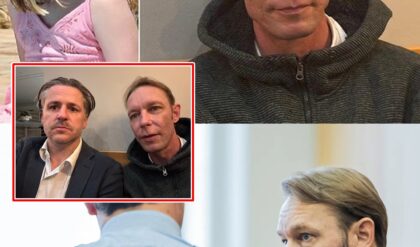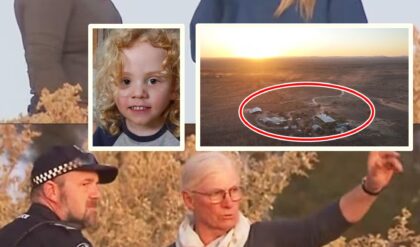Unnamed No More: Inside Naming The Dead, the Series Bringing America’s Lost Identities Back to Life

Across the United States, an estimated 50,000 unidentified bodies rest in morgues, graves, and evidence rooms — their names forgotten, their stories untold. For decades, they’ve been known only by chilling placeholders: Jane Doe. John Doe. Baby Doe. But a new six-part documentary series, Naming The Dead, aims to change that, shedding light on one of America’s quietest humanitarian crises — and the extraordinary team trying to end it.
At the heart of this groundbreaking show is the DNA Doe Project, a nonprofit organization founded in 2017 that has revolutionized the way unidentified remains are investigated. Using the power of genetic genealogy, the same method that helped capture the Golden State Killer, the project has given names back to the nameless — reconnecting victims with families who never stopped searching.
From Science to Soul: The DNA Doe Project’s Mission
The DNA Doe Project’s work sits at the intersection of forensic science, compassion, and persistence. Their volunteers — a mix of genealogists, detectives, and scientists — take DNA extracted from unidentified remains and upload the profiles to public genealogy databases. From there, they painstakingly build family trees, track ancestral connections, and narrow down possible identities.
It’s slow, emotional work. Sometimes it takes months; sometimes, years. But when a match finally comes, it means everything.
Each name restored isn’t just an entry in a database — it’s a person reclaimed from oblivion. It’s the end of a nightmare for a family that’s been waiting, often for decades, for an answer that never came.
As Naming The Dead shows, the project’s team isn’t just solving mysteries — they’re rewriting the final chapters of lives left unfinished.
The Series: True Crime with a Beating Heart
Produced with unprecedented access to active investigations, Naming The Dead brings viewers inside the tense, intricate process of identification. Every episode unfolds like a detective thriller — except these stories are heartbreakingly real.
Viewers meet the dedicated genealogists who spend sleepless nights building digital family trees from strands of DNA, the detectives reopening files long considered unsolvable, and the coroners and journalists who refuse to let the forgotten fade into silence.
The show doesn’t shy away from the emotional toll either. Each reveal — each long-awaited identification — lands with staggering weight. Behind every cold case is a family frozen in time, and Naming The Dead captures both the heartbreak and the healing that come with answers.
In one episode, a skull found off a rural highway leads investigators through generations of family secrets before finally revealing the truth. In another, a missing teenager from the 1980s is identified after 40 years, reuniting a mother with her daughter’s memory. The series balances forensic precision with raw human storytelling, making it one of the most emotional true-crime projects in recent memory.
Ethics, Emotion, and the Edge of Technology
DNA genealogy may sound clinical, but Naming The Dead underscores the deep ethical and emotional layers beneath it. The series confronts the moral dilemmas of using public genetic databases — where privacy, consent, and justice intersect. Should police have unrestricted access to genealogy data? What happens when a family learns their DNA led to an identification they never expected?
The producers handle these questions with sensitivity, never sensationalizing grief or crime. Instead, they illuminate how science and empathy can coexist — and how both are essential for true justice.
Why These Stories Matter
The 50,000 unnamed dead across America aren’t just statistics; they’re a reflection of systemic failures — of poverty, neglect, violence, and invisibility. Naming The Dead forces viewers to confront what it means to be forgotten in modern society, and what it takes to restore dignity to those who’ve been erased by circumstance.
“Every name is a victory,” says one investigator in the series’ trailer. “Every person we identify means a family can finally grieve — and heal.”
In giving these people back their names, the DNA Doe Project is also reclaiming humanity itself. For families who have lived in the limbo of not knowing, the project’s breakthroughs transform despair into peace, and silence into remembrance.
A Mirror of Hope

Naming The Dead isn’t just another true-crime series — it’s a portrait of perseverance, compassion, and the future of forensic justice. It invites viewers to witness how far human connection can reach when technology and empathy unite.
In a time when the true-crime genre often focuses on killers, Naming The Dead shifts the spotlight to the victims — to those who deserve to be known, remembered, and mourned.
Through its lens, the coldest cases in America aren’t just being solved — they’re being warmed by remembrance.
With each episode, a lost name becomes a story again. A mystery becomes a memory. And the once-forgotten find their way home.


